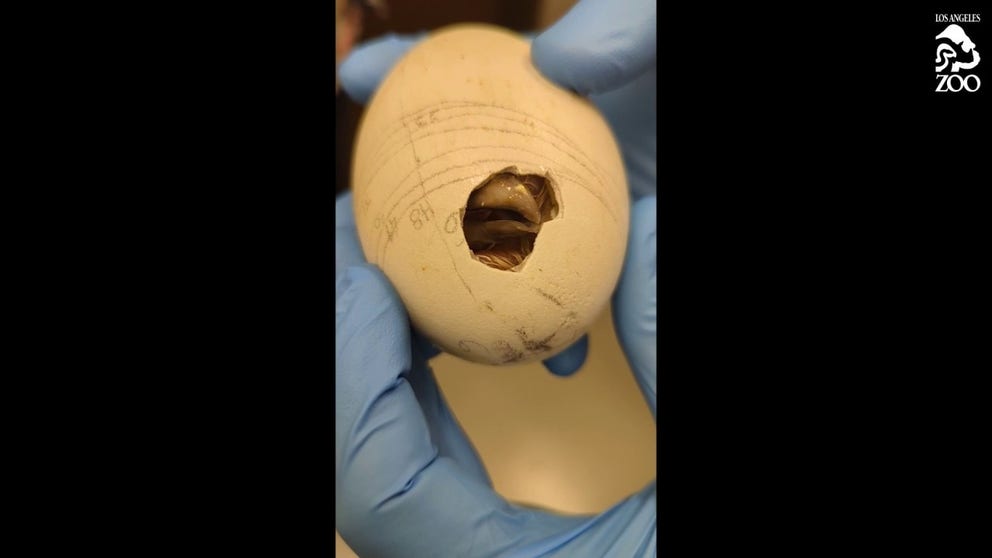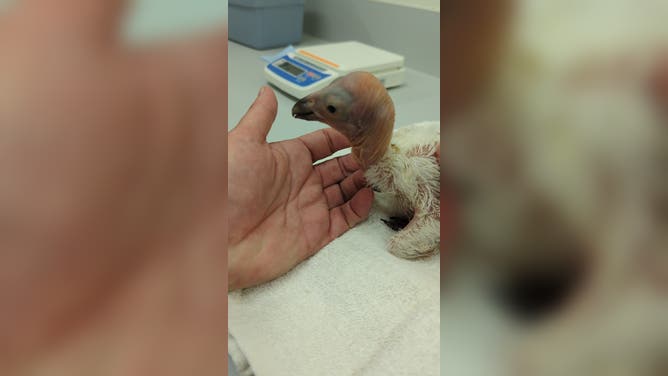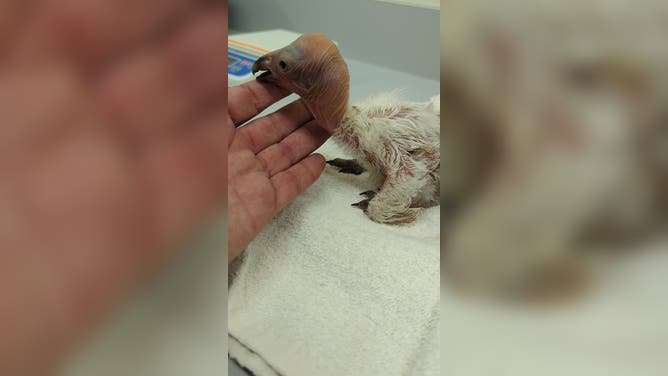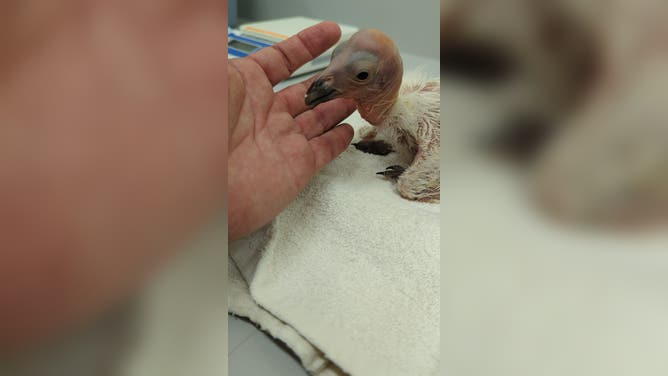See it: First baby condor hatches during 'epic laying season' of critically endangered birds at LA Zoo
The Los Angeles Zoo has been part of the U.S. Fish and Wildlife Service and California Fish and Game Commission's captive breeding program since its 1983 inception when biologists estimated California condor numbers dropped to just 22 across the globe.
A condor is born: The first of 2024 for the LA Zoo's Recovery Program
The LA Zoo shows video of the LA124 pipping, breaking out of the shell, as well as the first wellness check. The black and white video is the remote camera that keepers use to observe the family. Human interactions are kept to a minimum so the parents can raise the young.
LOS ANGELES – Meet baby LA124, the first California condor to hatch this year at the L.A. Zoo, the organization recently announced. He or she -- gender reveal party still needed -- hatched March 1 and will help keep his or her species from extinction.
The arrival came as a surprise to its keepers.
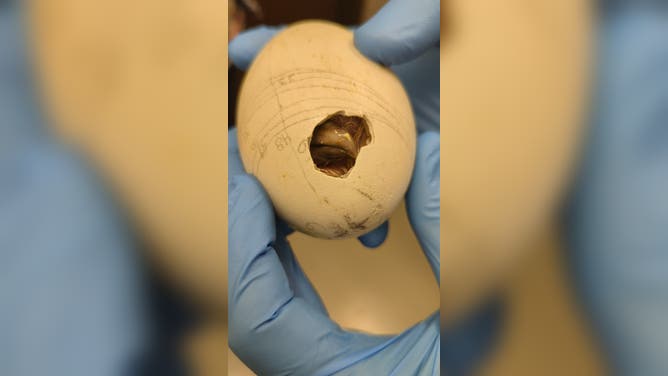
Eagle LA124 pipping or breaking out of the shell.
(LA Zoo / FOX Weather)
"This was the earliest that a California condor egg has ever been laid at the L.A. Zoo," explained Animal Keeper Debbie S. in a statement. "We weren’t expecting our first egg of the season for another week or two."
Keepers keep a close eye on the baby birds with remote cameras. Adult condors raise the young with "minimal human interaction." Then, all chicks are candidates to be released into the wild.
'LOVE LOCKS' OVER GRAND CANYON ARE HARMING NATIONAL PARK'S WILDLIFE, RANGERS SAY
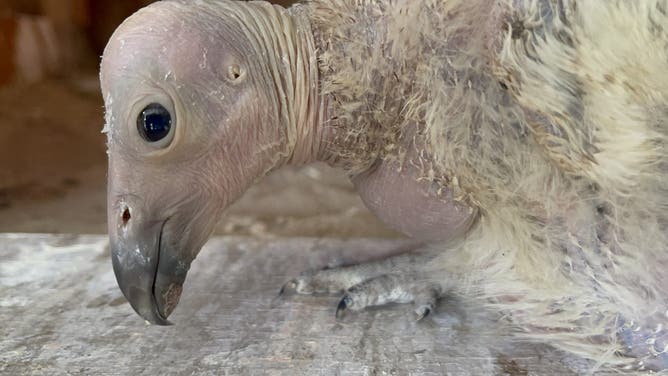
This scavenger grows to become the largest land bird in North America.
(LA Zoo / FOX Weather)
The adults had left the nest box in the video above while a keeper made a quick wellness check and grabbed a piece of shell for DNA testing. Testing will tell if the chick is male or female.
"He's healthy, happy, and fashionably early to everything so far," said proud mama/keeper Chandra D. of her advanced chick.

Condor eggs in the incubator.
(LA Zoo / FOX Weather)
To date, the zoo has welcomed five chicks in total, four in the past two weeks. LA124's egg was laid in early January. Since then, condors laid 15 more.
"Our condor pairs here are having a pretty epic egg-laying season so far, and they are not done yet," Mike Clark, condor keeper with the Los Angeles Zoo, said in a statement. "We are seeing excellent fertility in the eggs produced so far, and we expect 4 to 5 more eggs before the 2024 laying season is over."
OREGON ZOO'S HIGH-TECH 'SMART EGG' COULD HELP SAVE ENDANGERED CALIFORNIA CONDOR
California Condor Recovery Program
This "epic" season comes as a relief to the zoo, which is part of the California Condor Recovery Program, a captive breeding program to re-establish the California condor in the wild. The population rebounded from just 22 individuals in 1983 to 561 in December – 344 of which were living in the wild, according to the zoo.
"The California Condor Recovery Program is a critical and highly successful component within the Zoo’s Conservation Strategic Plan," Dr. Jake Owens, Director of Conservation, Los Angeles Zoo said in a statement. "As a conservation organization, we are not only focused on saving endangered wildlife in far-off habitats around the globe, but also species that are right here in our own backyard. The last thirty years has confirmed that by breeding and raising condors into adolescents here at the Los Angeles Zoo, we are giving them the best chance of survival after their release into the wild."
Habitat loss, lead poisoning from eating lead bullet fragments in animal carcasses, pesticide pollution and Highly Pathogenic Avian Influenza continue to threaten the critically endangered animals' future.
Looking at the fuzzy baby, it may be hard to believe that it will grow to be the largest land bird in North America, according to the zoo. Adults stand up to three feet high and the wingspan measures 9 1/2 feet.
ENDANGERED CONDORS GET PROTECTION FROM DEADLY BIRD FLU IN ZOO'S HISTORIC VACCINE TRIAL
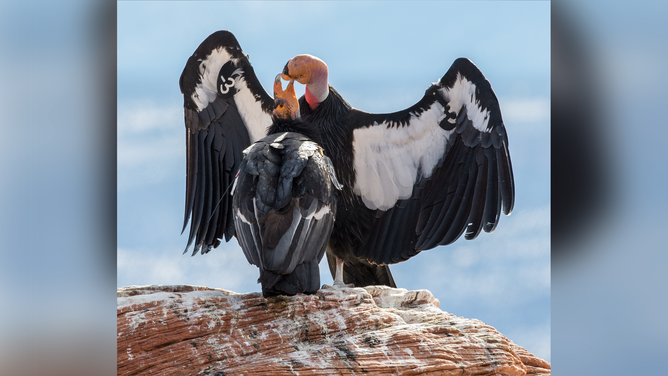
File: A photo showing California condors.
(John Sherman / FOX Weather)
They can fly as high as 15,000 feet and travel up to 150 miles per day. From that height, the birds need sharp eyesight to spot the carcasses they feed on. The zoo calls the species, "natures's cleaning crew."
